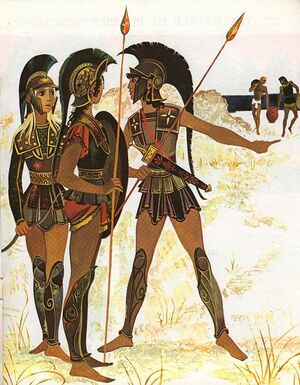Deva-Hellene Kingdom of Arosiananda: Difference between revisions
Jump to navigation
Jump to search
| Line 47: | Line 47: | ||
==Idealogy== | ==Idealogy== | ||
==Religion== | ==Religion== | ||
===Buddhism and its influence=== | |||
===Followers of the Dharma=== | |||
===Buddhist-Hellene Syncretism and influences on Gaia worship=== | |||
==Art== | ==Art== | ||
==Economy== | ==Economy== | ||
Revision as of 06:06, 3 April 2022
Deva-Hellene Kingdom of Arosiananda | |||||||||
|---|---|---|---|---|---|---|---|---|---|
| 103 BC–37 AD | |||||||||
| Historical era | Antiquity | ||||||||
• Established | 103 BC | ||||||||
• Disestablished | 37 AD | ||||||||
| |||||||||
The Deva-Hellene Kingdom of Arosiananda, also known historically as Arosiananda and the Avanola Kingdom, was a Vahna Period Hellene Kingdom covering various parts of northwestern Tennai, Khaltia, and the Kallapa Valley to the Varuna Ocean. It existed between the end of the second century BC through the first half of the first century AD an was ruled by over 20 kings and queens, Kephissa being the most illustrious and successful.
